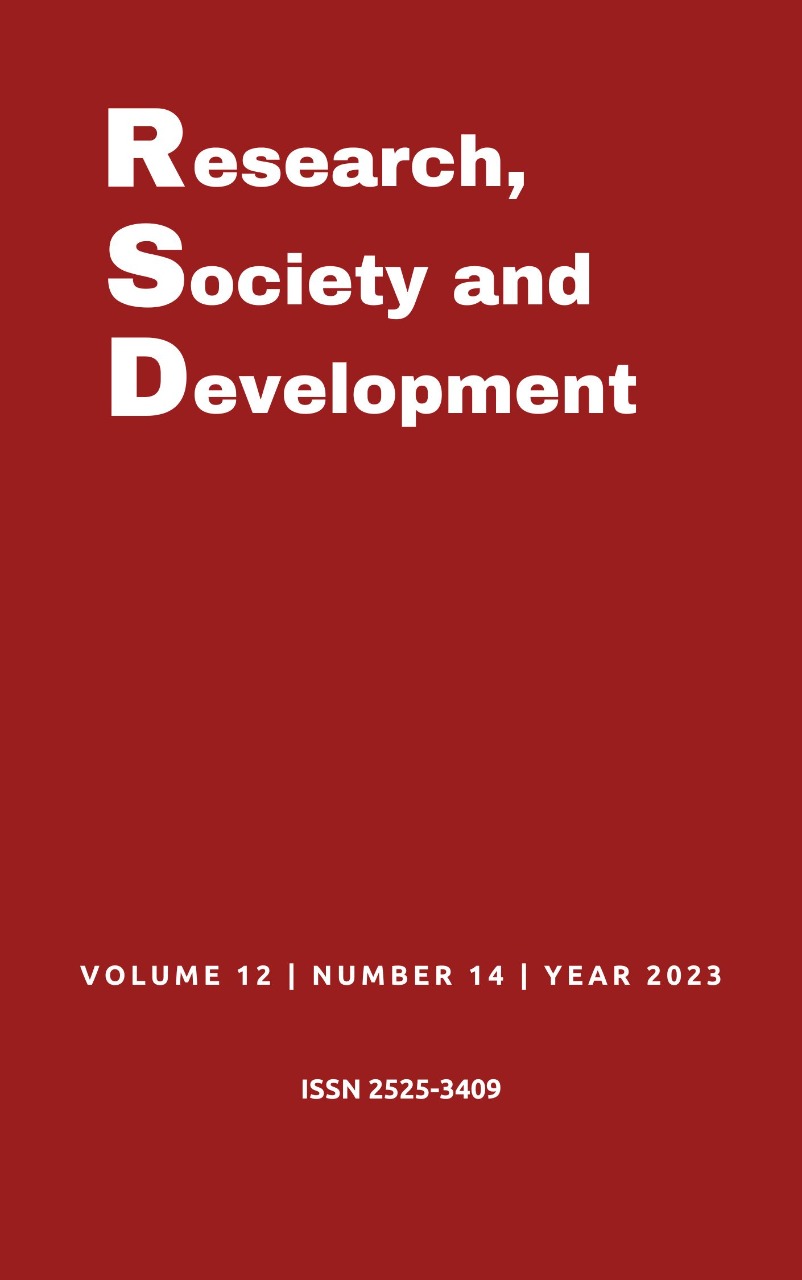Modelo de transferência de calor no lingotamento contínuo – O problema do controle dos sprays de resfriamento
DOI:
https://doi.org/10.33448/rsd-v12i14.44637Palavras-chave:
Lingotamento contínuo, Modelos matemáticos, Resfriamento por spray, Automação, Defeitos de fundição.Resumo
Na indústria siderúrgica, o processo de lingotamento contínuo é considerado a segunda inovação técnica significativa após o advento do processo de produção de aço a oxigênio. As condições térmicas predominantes são um fator dominante na qualidade do produto. A prática comum de controle de sprays, na qual o fluxo de água nos sprays é proporcional à velocidade de lingotamento, é inadequada para condições de estado transiente durante mudanças de velocidade. Os objetivos do presente estudo foram duplos. A primeira foi estudar os princípios básicos do controle de sprays. Como ferramenta necessária, foi desenvolvido um modelo matemático para o campo térmico. Este modelo deveria ser usado para simular a distribuição de temperatura no veio. O segundo objetivo foi utilizar esses princípios para desenvolver um modelo de controle dos sprays. O modelo térmico foi utilizado para analisar os efeitos de ambas as práticas na temperatura superficial do veio. Os resultados mostraram que uma flutuação significativa de temperatura pode ser gerada pelo controle proporcional e que o novo modelo de controle prevê realisticamente os requisitos térmicos do veio durante mudanças na velocidade de lingotamento.
Referências
Baptista, L. A. S. (1979) Control of Spray Cooling in the Continuous Casting of Steel, Master of Applied Science Thesis, The University of British Columbia, Canada.
Brimacombe, J. K. (1976) Cracking Formation in the Continuous Casting of Steel, Can. Met. Quart., 15, 163-175.
Brimacombe, J. K. & Sorimachi, K. (1977) Crack Formation in the Continuous Casting of Steel, Metall. Trans. B, 8, 489-505.
Brimacombe, J. K., Hawbolt, E. B. & Weinberg, F. (1982) Metallurgical Investigation of Continuous-Casting Billet Moulds. Transactions of the Iron and Steel Society of AIME, 1, 29-40.
Carnahan, B., Luther, H. A. & Wilkes, J. O., (1969) Applied numerical methods. John Wiley & Sons.
Grill, A., Sorimachi, K. & Brimacombe, J. K. (1976) Heat flow, gap formation and break-outs in the continuous casting of steel slabs, Metall. Trans. B, 7, 177-189.
Lait, J. E., et al. (1974) Mathematical Model of Heat Flow in the Continuous Casting of Steel, Ironmaking Steelmaking,1, 90-97.
Lankford, W. T. (1972) Some considerations of strength and ductility in the continuous-casting process. Metall. Trans., 3, 1331–1357.
Mitsutsuka, M., (1968) Study on the Water Spray Cooling of Steel Plate at High Temperature, Tetsu to Hagane, 54, 1457-1471.
Myers, G. E., (1971) Analytical Methods in Conduction Heat Transfer, McGraw-Hill.
Nozaki, T. et al (1978) A Secondary Cooling Pattern for Preventing Surface Cracks of Continuous Casting Slab, Trans. I. S. I. J., 18, 330-338.
Peaceman, D. W. & Rackford Jr., H. H. (1955) The Numerical Solution of Parabolic and Elliptic Differential Equations, Journal of the Society for Industrial and Applied Mathematics, 3, 28-41.
Pereira A. S. et al. (2018). Metodologia da pesquisa científica. UFSM
Sakamoto, E. et al. (1974) Improvement of Surface Defects of Continuously Cast Slabs for Heavy Plates and No Conditioning, Tetsu to Hagane, 60, 973-980.
Samarasekera, I. V. (1980) Thermal distortion of continuous casting moulds, PhD Thesis, 1980, The Univ. of British Columbia, Canada.
Schimidt, L. & Jossefson, A. (1974) Formation, and avoidance of transverse cracks in continuously cast slabs from curved mold machines, Scand. J. Met., 3, 193-199.
Sengupta, J., Thomas, B. G. & Wells, M. A. (2005) The use of water cooling during the continuous casting of steel and aluminum alloys. Metall. Mater Trans A, 36, 187–204.
Suzuki, H. G., Nishimura, S. & Yamaguchi, S. (1982) Characteristics of Hot Ductility in Steel Subjected to the Melting and Solidification, Trans. I. S. I. J., 22, 48-56.
Van Drunen, G., Brimacombe, J. K & Weinberg, F. (1975) Internal Cracks in Strand-Cast Billets, Ironmaking Steelmaking, 2, 125-133.
Yamasaki, J. et. al. (1981) The Control of the Surface Temperature in the Continuous Slab Casting Machine by the On-line Digital Computer, IFAC Proceedings Volumes. 14(2), 2639-2644.
Weinberg, F. (1979) The strength and ductility of continuously cast steels above 800°C. Metall. Trans. B, 10, 513–522.
Downloads
Publicado
Edição
Seção
Licença
Copyright (c) 2023 Luis Antonio S. Baptista; Roberto Carlos Sales; Carolina Moreira de Almeida; Wysllan J. L. Garção; Alexandre F. Ferreira

Este trabalho está licenciado sob uma licença Creative Commons Attribution 4.0 International License.
Autores que publicam nesta revista concordam com os seguintes termos:
1) Autores mantém os direitos autorais e concedem à revista o direito de primeira publicação, com o trabalho simultaneamente licenciado sob a Licença Creative Commons Attribution que permite o compartilhamento do trabalho com reconhecimento da autoria e publicação inicial nesta revista.
2) Autores têm autorização para assumir contratos adicionais separadamente, para distribuição não-exclusiva da versão do trabalho publicada nesta revista (ex.: publicar em repositório institucional ou como capítulo de livro), com reconhecimento de autoria e publicação inicial nesta revista.
3) Autores têm permissão e são estimulados a publicar e distribuir seu trabalho online (ex.: em repositórios institucionais ou na sua página pessoal) a qualquer ponto antes ou durante o processo editorial, já que isso pode gerar alterações produtivas, bem como aumentar o impacto e a citação do trabalho publicado.


